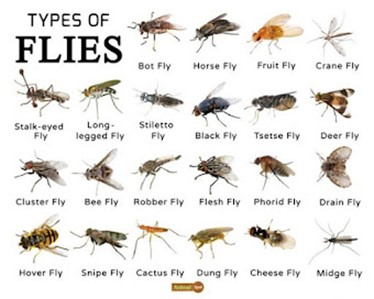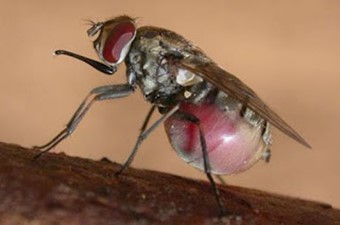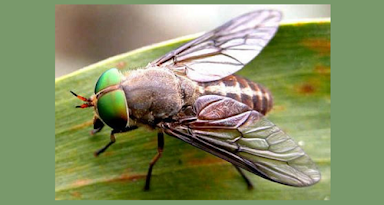Brought to you by ARBICO Organics

As summer is fast approaching, I thought a fly tutorial might be helpful. As you make your summer plans, you may want to prepare for the arrival of these pests as well. After all, According to this article, there are 17 million flies for each human being and there are nearly eight billion people on the planet (you do the math, it’s a lot). Not only are their sheer numbers staggering, but the variety is also as well – there are at least 120,000 species of flies. All of this means that these fliers will be out where you want to be this summer and shielding yourself from their annoying habits and the potential health risks they carry can be challenging. But, as with many things in life, knowledge is power and if you know what types of flies you are dealing with, developing a successful fly control program is within your reach. Here are three of the most common:

By a large margin, the most common fly is the good ole House Fly. These irritating and disease-causing insects are a constant in all our lives. House Flies have big red eyes, translucent wings, and are grayish brown with four large stripes running parallel down their bodies. These flies are known as “filth flies” because they feed and reproduce on rotting organic matter, manure, and other smelly things. Most fly control methods out there work well against them (although none of them get rid of flies completely). These include parasitic wasps, smelly liquid traps, sticky strips, and sprays. The downside is that there are just so many of them and there is continuous supply of filth for them to breed and feed in. With as many house flies as there are, we can be grateful that at least they don’t bite.
Stable Fly (Stomoxys calcitrans)

Stable Flies are another filth-breeding fly species. However, unlike house flies that feed on decaying and sugary organic matter, both male and female stable flies feed on blood. Stable flies have seven spots in a checkerboard pattern on their abdomen and long, needle-like mouthparts that project forward. The image to the right shows a female stable fly engorged with blood. You can clearly see the long, straw-like proboscis she uses to suck up the blood. Stable flies do not generally feed on people, but they will grab a human snack if their preferred hosts are unavailable. These flies are sometimes called Dog Flies because they’ll gather mercilessly around our beloved canines. Stable flies rest in vegetation, so they can be easily stirred up by lawn activities like mowing. Stable flies have been known to travel more than 100 miles on their own and occasionally large numbers of them are picked up by the wind and deposited great distances away in a sudden swarm for that area. Because they are filth flies, the same fly control methods used on house flies can be used on stable flies, but the success rate is not always as good as with house flies.

Horse flies, like stable flies, are biting flies that seek out mammalian blood. Only female horse flies drink blood (she needs a blood meal to form viable eggs); the males live on pollen and nectar for their short lives. Horse Flies are short-bodied, but stout, and are brown, black, or yellow. They usually have black splotches or patterns on their wings and stripes on their abdomens. These biting flies have protuberant mouth parts and very large, psychedelic eyes. The picture to the left is a Greenhead Horse Fly, one of the largest species (can be over 1/2″). Horse fly bites are especially nasty, as they don’t just break the skin – they cut into the skin with scalpel-like mouth parts, spit into the wound to keep it from coagulating, and feed as long as they can (here’s a video of a female feeding). The extravagant eyes of horse flies can help to distinguish between males and females; males have eyes that wrap-around while a female’s eyes are separated. Horse flies don’t just feed on horses, any mammal will do. Horse flies are notoriously difficult to control, partly because they bred in watery natural habitats where larval control would be either illegal or unethical. Use everything in your arsenal to keep them at bay – keep areas dried out, when possible, use sticky traps generously, douse yourself and your animals in repellents and use traps specifically designed for horse flies.
Keep the fly swatter handy this summer!
Pam Couture is the Lead Content Writer at ARBICO Organics. She lives in Tucson, Arizona, where she is surrounded by family, friends, and nature. ARBICO Organics can be contacted at 800.827.2847 and you can visit their website at ARBICO-Organics.com.
Related Articles & Free Email Newsletter Sign Up
What’s This Bug? The Antlered Wasp
What’s This Bug? Wait – The Hawk Moth Caterpillar Is a Bug?


Comment here